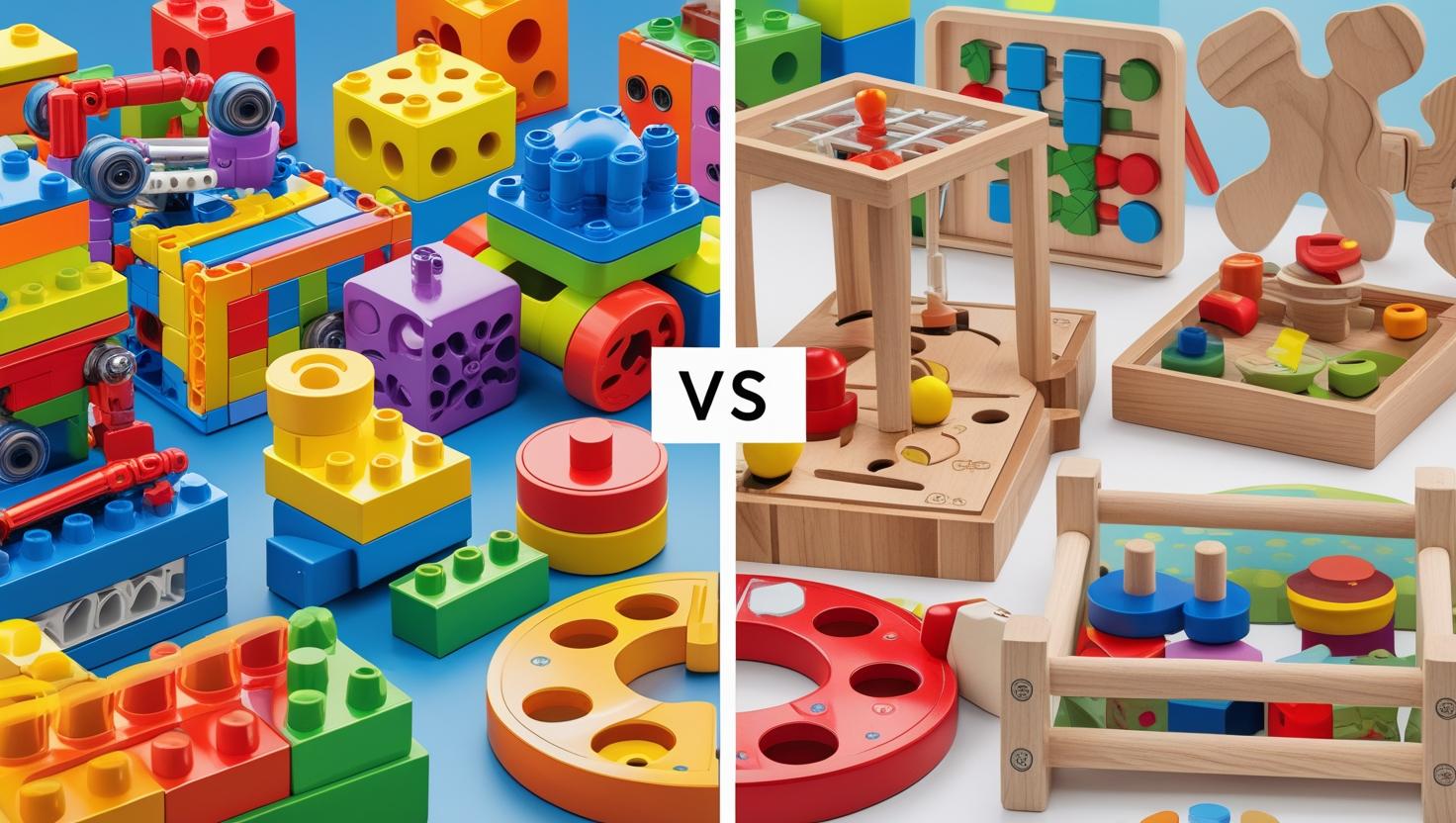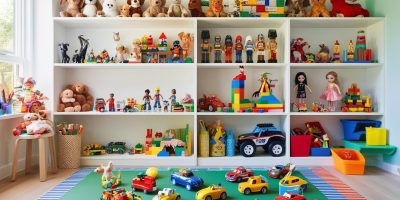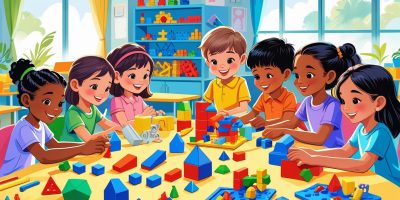Walk down any toy aisle—or scroll through parenting blogs—and you’ll hear two terms over and over: STEM toys and Montessori toys. They both claim to boost your child’s development, encourage independent thinking, and support lifelong learning.
But what exactly is the difference? And more importantly: Which one is right for your child?
As a parent who has tested both, here’s a clear breakdown of how STEM and Montessori toys compare, where they overlap, and how you can use both to support your child’s unique learning journey.
What Are STEM Toys?
STEM stands for Science, Technology, Engineering, and Math. STEM toys are designed to teach and reinforce these skills through hands-on experimentation and play. Think building sets, coding robots, circuit kits, and science experiment kits.
STEM Toy Goals:
- Promote problem-solving and critical thinking
- Introduce early engineering and science concepts
- Encourage experimentation and discovery
- Prepare kids for future tech-based learning
Examples:
- Snap Circuits
- LEGO STEM sets
- Botley Coding Robot
- KiwiCo STEM crates
- Microscope & biology kits
What Are Montessori Toys?
Montessori toys are inspired by the Montessori method of education, which emphasizes independence, real-world learning, and self-guided exploration. These toys are usually made of natural materials, are simple in design, and focus on sensory development and fine motor skills.
Montessori Toy Goals:
- Encourage independent play
- Foster focus and concentration
- Support practical life skills
- Promote real-world understanding through play
Examples:
- Wooden stacking toys
- Sandpaper letters
- Dressing frames
- Object permanence boxes
- Practical life kits (brooms, scoops, watering cans)
Key Differences Between STEM and Montessori Toys
| Feature | STEM Toys | Montessori Toys |
|---|---|---|
| Primary Focus | Problem-solving, science & logic | Independence, motor skills, sensory learning |
| Materials | Often plastic, electronic, or complex | Natural wood, fabric, minimalist design |
| Structure | Encourages experimentation | Encourages repetition and mastery |
| Tech Use | Often includes screens or robotics | Screen-free, real-world tools |
| Parental Involvement | May require help to start | Encourages self-play |
Where They Overlap
Despite their differences, STEM and Montessori toys both value hands-on learning. They:
- Encourage curiosity
- Offer active (not passive) play
- Build foundational skills in a natural way
- Support open-ended thinking
In fact, some toys fall into both categories. A wooden gear puzzle teaches engineering principles in a Montessori-friendly form. A magnet set with structured patterns fits both logic and fine motor play.
Which Should You Choose?
The good news? You don’t have to pick just one.
Choose Montessori toys if your child:
- Is younger (1–4 years old) and needs help with focus, motor skills, or sensory development
- Benefits from repetition and a calm environment
- Struggles with overstimulation or screen time
Choose STEM toys if your child:
- Is curious about how things work
- Enjoys building, coding, or experimenting
- Is ready for more structured challenges (ages 4+)
Pro tip: Start with Montessori basics when your child is younger, and slowly layer in STEM toys as their curiosity grows.
Final Thoughts
Montessori toys support early development and independence. STEM toys ignite curiosity and analytical thinking. Together, they’re a powerhouse combo for raising confident, capable learners.
There’s no wrong choice—only what works best for your child’s age, personality, and learning style.
Want to make it simple? Aim for a balance: natural, screen-free Montessori tools for everyday life and calm play… and fun, hands-on STEM kits for when your child wants to explore and invent.





